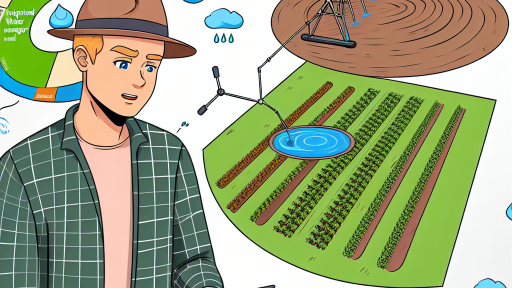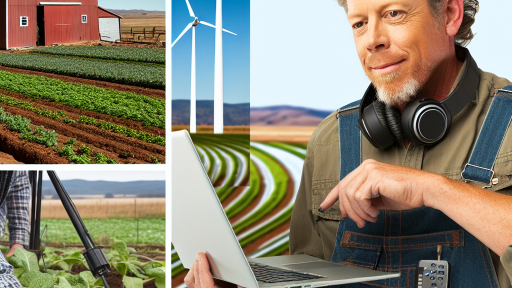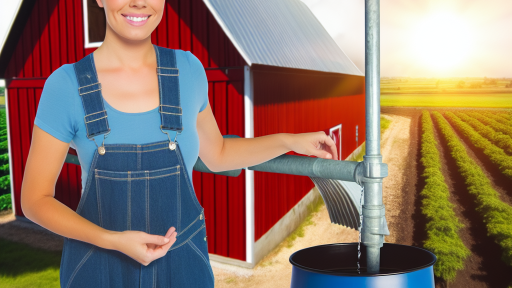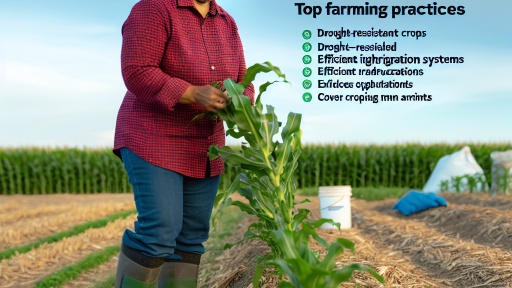Understanding Climate Risks: Impacts on Agriculture
Defining Climate Risks
Climate risks refer to the potential negative effects of climate change on agricultural practices.
They include extreme weather events, shifting growing seasons, and increasing pests.
Farmers face these challenges daily, impacting crop yields and livestock health.
Impacts of Extreme Weather
Extreme weather events include droughts, floods, and severe storms.
Droughts can lead to water shortages, stressing crops and livestock.
On the other hand, floods can destroy crops and erode soil quality.
Severe storms can cause physical damage and interrupt planting schedules.
Changing Growing Seasons
Climate change shifts growing seasons, affecting planting and harvesting times.
Farmers may struggle to adapt to these changes without proper guidance.
This shift can result in mismatches between crop types and climate conditions.
Consequently, yields may decline, affecting overall food supply.
Pest and Disease Invasions
Warmer temperatures promote the spread of pests and diseases.
Farmers must manage new threats to protect their crops effectively.
Increased pest activity can lead to higher costs for pesticides and management.
Moreover, this affects organic farming practices and sustainability efforts.
Transform Your Agribusiness
Unlock your farm's potential with expert advice tailored to your needs. Get actionable steps that drive real results.
Get StartedSoil Degradation
Climate risks contribute to soil degradation through erosion and nutrient loss.
Healthy soil is vital for crop growth and agricultural sustainability.
Farmers need to implement soil conservation practices to combat this issue.
Maintaining soil health ensures long-term productivity and resilience.
Global Food Security Concerns
The combined effects of climate risks threaten global food security.
A decline in agricultural output can lead to increased food prices.
This situation exacerbates hunger and poverty in vulnerable populations.
Addressing climate challenges is essential for ensuring food accessibility.
Innovative Crop Management Techniques for Climate Resilience
Understanding Climate Risks
Farmers around the world face increasing climate risks.
These risks stem from unpredictable weather patterns.
Dry spells, heavy rains, and unseasonable frosts threaten crops.
Moreover, rising temperatures significantly impact agricultural productivity.
Utilizing Technology for Better Decision-Making
Modern technology enables farmers to make informed decisions.
Data analytics tools provide insights into weather patterns.
Farmers can access real-time information through mobile apps.
Additionally, drones assist in monitoring crop health effectively.
Implementing Crop Rotation Strategies
Crop rotation enhances soil health and productivity.
This technique reduces pest and disease build-up in fields.
Furthermore, diverse crops improve nutrient cycling in the soil.
Farmers like Maya Gonzalez in Oregon apply innovative rotations successfully.
Adopting Precision Farming Techniques
Precision farming optimizes resource use and productivity.
This method tailors inputs to specific crop needs.
For instance, targeted irrigation reduces water wastage.
Furthermore, precision fertilizer application enhances crop yields.
Showcase Your Farming Business
Publish your professional farming services profile on our blog for a one-time fee of $200 and reach a dedicated audience of farmers and agribusiness owners.
Publish Your ProfileIntegrating Sustainable Practices
Sustainable practices support long-term agricultural viability.
For example, cover crops protect the soil from erosion.
Additionally, organic farming reduces chemical dependency.
Moreover, agroforestry systems improve biodiversity on farms.
Engaging with Local Farming Communities
Collaboration among local farmers fosters resilience.
Sharing experiences and resources strengthens community bonds.
Local farmer cooperatives help in pooling resources effectively.
These networks allow farmers to adapt together to climate challenges.
The Role of Technology: Precision Agriculture and AI Solutions
Understanding Precision Agriculture
Precision agriculture enhances farming by using technology to monitor and manage field variability.
This approach optimizes resources like water, fertilizers, and seeds effectively.
As a result, farmers can increase yields while minimizing waste.
Furthermore, precision agriculture utilizes data collection methods such as satellites and drones.
These technologies provide real-time information about crop health and soil conditions.
Leveraging Artificial Intelligence
Artificial intelligence (AI) plays a crucial role in modern agriculture.
AI tools analyze vast amounts of data to provide actionable insights for farmers.
This allows for better decision-making regarding planting, watering, and harvesting times.
Additionally, AI can predict weather patterns and recommend optimal planting schedules.
As a consequence, farmers can adapt quickly to changing climate conditions.
Benefits of Technological Integration
Integrating technology into agriculture offers multiple advantages.
One key benefit is the enhanced efficiency of farming operations.
For instance, smart irrigation systems save water by using moisture sensors.
Moreover, automated machinery reduces the need for manual labor.
Consequently, farmers can reduce operational costs while increasing productivity.
Case Studies of Success
Many farmers have successfully adopted technology in innovative ways.
For instance, CropSense improved crop yields by utilizing drone technology in Oregon.
Additionally, SmartFarm in Texas saw a 20% increase in efficiency by employing AI analytics.
These examples highlight the transformative potential of technology in agriculture.
Challenges and Considerations
Despite the benefits, challenges remain in adopting technological solutions.
High initial costs can deter small-scale farmers from accessing advanced technologies.
Moreover, training and education are crucial for effective implementation.
Farmers must understand how to analyze and act on data effectively.
Nonetheless, addressing these challenges can unlock significant agricultural potential.
See Related Content: Climate-Smart Practices to Reduce Flood Impact on Farms
Alternative Farming Practices: Agroforestry and Permaculture
Introduction to Agroforestry
Agroforestry integrates trees into crop and livestock farming systems.
This practice enhances biodiversity and soil health.
Farmers can diversify their income through various products.
Additionally, agroforestry improves resilience against climate risks.
Benefits of Agroforestry
- Increased crop yields through improved soil fertility.
- Enhanced water retention and reduced erosion.
- Natural habitat for wildlife and pollinators.
Understanding Permaculture
Permaculture focuses on designing sustainable agricultural ecosystems.
It mimics natural ecosystems to create self-sufficient farms.
Farmers design structures that promote energy efficiency.
Showcase Your Farming Business
Publish your professional farming services profile on our blog for a one-time fee of $200 and reach a dedicated audience of farmers and agribusiness owners.
Publish Your ProfileFurthermore, permaculture principles encourage local food production.
Principles of Permaculture
- Observe and interact with the environment.
- Catch and store energy for future use.
- Use and value renewable resources and services.
Implementing Agroforestry and Permaculture
Farmers can start by incorporating native species into their fields.
They should choose plants that complement each other.
Training and workshops can help farmers understand these practices.
Collaboration with local agricultural extensions is beneficial.
Success Stories
Many farmers report significant income boosts from these practices.
For example, Maria Sanchez transformed her ranch using agroforestry.
She planted fruit trees alongside her main crops.
This diversification led to resilience during droughts.
Innovative Farming Approaches
Farmers facing climate risks should explore agroforestry and permaculture.
These practices enhance sustainability and profitability.
Transitioning requires careful planning and community support.
Ultimately, innovative solutions can steer agriculture toward a sustainable future.
Discover More: Soil Management Tips for Effective Carbon Sequestration
Water Management Innovations
Irrigation Techniques
Irrigation plays a crucial role in farming today.
Farmers can use various innovative irrigation systems.
For example, drip irrigation delivers water directly to plant roots.
This technique minimizes water waste and maximizes efficiency.
Modern sprinkler systems also offer flexibility and coverage.
Farmers can automate these systems for better water management.
Rainwater Harvesting
Harvesting rainwater provides an additional water source.
Farmers can collect rainwater from roofs and surfaces.
This collected water can irrigate crops during dry spells.
Implementing rainwater harvesting systems reduces reliance on groundwater.
Moreover, these systems help recharge local aquifers.
Integration of Technology
Technology enhances water management in agriculture.
Smart sensors monitor soil moisture levels effectively.
Farmers receive real-time data to optimize irrigation schedules.
Furthermore, mobile apps provide tips and predictions based on weather forecasts.
Investing in precision agriculture techniques saves both water and costs.
Community-Based Initiatives
Farmers can benefit from collective water management practices.
Community organizations often support local water conservation efforts.
These initiatives promote the sharing of resources and knowledge.
Collaborative efforts can lead to sustainable water use strategies.
Ultimately, these practices strengthen community resilience against climate risks.
Uncover the Details: Resilient Farming Strategies for Climate Change Impact
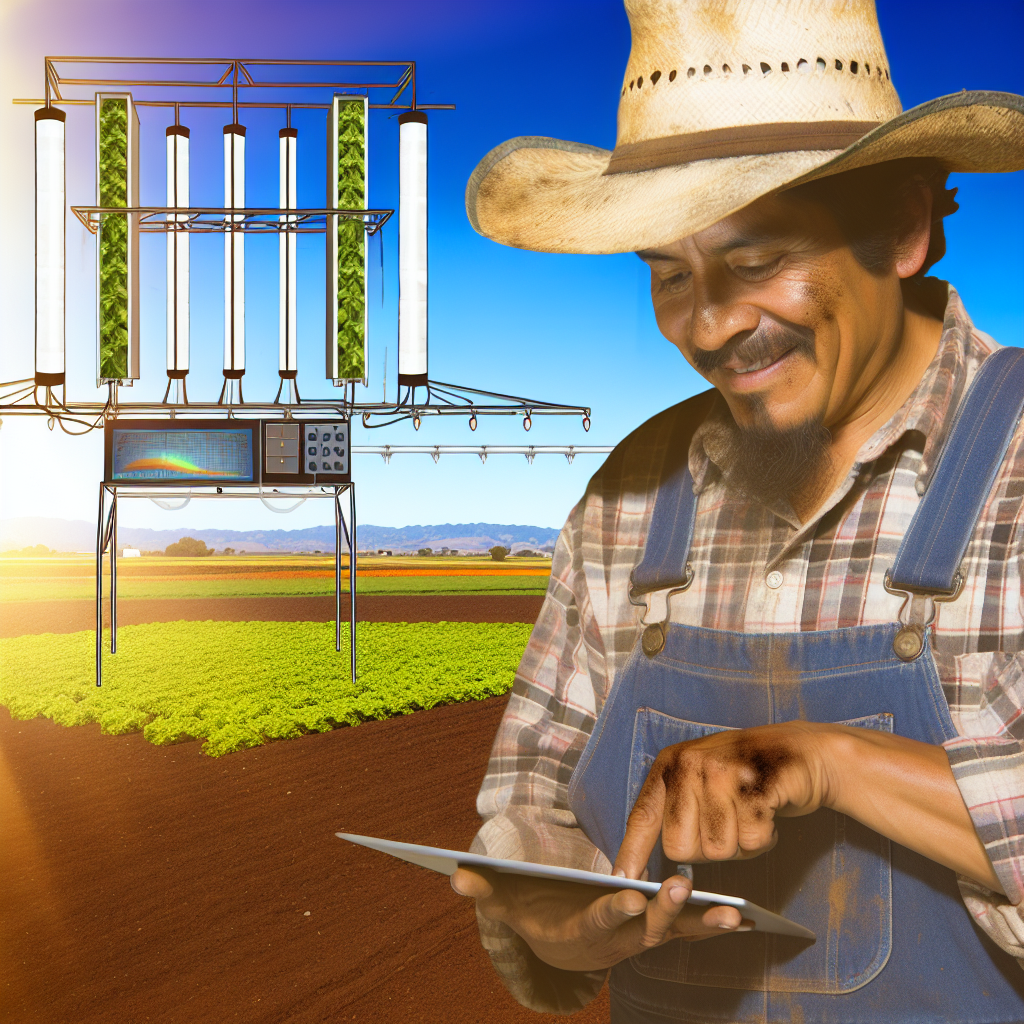
Diverse Crop Varieties: The Importance of Genetic Resilience
Understanding Genetic Diversity
Genetic diversity refers to the variety of genes within a species.
This diversity enhances a plant’s ability to adapt to environmental changes.
Increased genetic variability leads to stronger crops.
Farmers benefit from cultivating a range of crop varieties.
Showcase Your Farming Business
Publish your professional farming services profile on our blog for a one-time fee of $200 and reach a dedicated audience of farmers and agribusiness owners.
Publish Your ProfileEnhancing Adaptability
Diverse crops can withstand various climate stresses.
For instance, some varieties resist drought more effectively.
Other types may thrive in excessively wet conditions.
Farmers can select crops based on local climate risks.
Boosting Resilience Against Pests and Diseases
Genetic resilience protects crops from pests and diseases.
Diverse plants reduce the chances of widespread crop failure.
Healthy genetic diversity creates a less favorable environment for pests.
Consequently, farmers can lower their reliance on chemical pesticides.
Promoting Sustainability
Utilizing diverse crop varieties contributes to sustainable farming.
This approach maintains soil health and reduces erosion.
Furthermore, it helps in conserving resources for future generations.
Diverse agricultural systems provide numerous ecological benefits.
Implementing Crop Rotation and Intercropping
Crop rotation and intercropping enhance genetic diversity.
By alternating crop types, farmers can restore soil nutrients.
This practice reduces disease buildup in the fields.
Farmers should consider these techniques for better yields.
Engaging with Agricultural Research
Farmers can benefit from modern agricultural research.
Scientists develop new crop varieties tailored for specific conditions.
Engaging in research allows farmers to access innovative solutions.
Collaboration with agricultural institutions fosters better practices.
You Might Also Like: Precision Agriculture for Effective Emission Control
Community Support Systems: Collaborations and Knowledge Sharing
Importance of Community Support
Community support plays a crucial role in helping farmers tackle climate risks.
Strong networks allow farmers to share valuable insights and resources.
Moreover, these connections can foster resilience and innovation.
Building Collaborative Networks
Farmers should actively engage with local organizations and groups.
Collaboration can lead to joint purchasing of sustainable inputs.
Additionally, pooling resources for equipment can reduce costs.
Success Stories from Collaborative Efforts
The Green Valley cooperative exemplifies successful collaboration.
It offers shared services such as irrigation systems and pest management.
As a result, members report increased yields and reduced costs.
Leveraging Technology for Collaboration
Technology platforms can enhance community support initiatives.
Farmers can use online forums to exchange best practices.
Moreover, social media helps connect farmers with experts and researchers.
Knowledge Sharing Initiatives
Workshops and training sessions are effective ways to share knowledge.
Local universities often partner with farmers to offer educational programs.
Webinars on adaptive farming practices can reach a wider audience.
Establishing Mentorship Programs
Experienced farmers can mentor newcomers in the industry.
This relationship fosters knowledge transfer and skill development.
Mentorship programs can also build confidence among new farmers.
Utilizing Research and Data
Access to research data helps farmers make informed decisions.
Showcase Your Farming Business
Publish your professional farming services profile on our blog for a one-time fee of $200 and reach a dedicated audience of farmers and agribusiness owners.
Publish Your ProfileOrganizations like the Agricultural Research Service provide vital resources.
Farmers can apply these insights to enhance their farming practices.
Functional Community-Driven Projects
Community-driven projects can address specific needs effectively.
For instance, collaborative weather stations provide accurate forecasts.
Farmers can use this information to plan their planting schedules.
Promoting Sustainable Practices
Community projects can also promote sustainable agricultural methods.
Sharing techniques like cover cropping can enhance soil health.
This allows farmers to combat the adverse effects of climate change.
Policy and Financial Support
Government Initiatives for Sustainable Farming
Governments play a critical role in supporting farmers facing climate risks.
They implement policies that promote sustainable agricultural practices.
Financial incentives are also offered to encourage eco-friendly farming.
Subsidies and Grants
Subsidies help offset the costs of transitioning to sustainable methods.
Many farmers rely on these financial aids to remain viable.
Grants are often available for research and development in agriculture.
Such funding enables innovative solutions to thrive.
Technical Assistance Programs
Technical assistance programs offer guidance to farmers.
These programs help implement best practices for climate resilience.
Expert advice can significantly enhance productivity and sustainability.
Partnerships with Agricultural Organizations
Collaboration with organizations fosters knowledge exchange.
Such partnerships provide resources for farmers to adapt effectively.
Organizations often conduct workshops and training sessions.
These educational opportunities empower farmers in their practices.
Access to Research and Technology
Governments support research initiatives focused on climate challenges.
Access to new technologies can improve farming efficiency.
Adopting advanced tools enhances farmers’ capacity to cope with risks.
Insurance Programs
Insurance programs are crucial for protecting farmers’ investments.
Government-backed crop insurance offers financial security during losses.
These programs encourage farmers to take calculated risks.
Ultimately, they promote resilience against climate uncertainties.
Public Awareness Campaigns
Awareness campaigns educate the public about sustainable practices.
Such initiatives foster community support for local farmers.
Informed consumers often prefer sustainably grown products.
Supporting local agriculture strengthens the overall economy.
Additional Resources
Fourth National Climate Assessment
Climate Impacts in the Great Plains | Climate Change Impacts | US …

